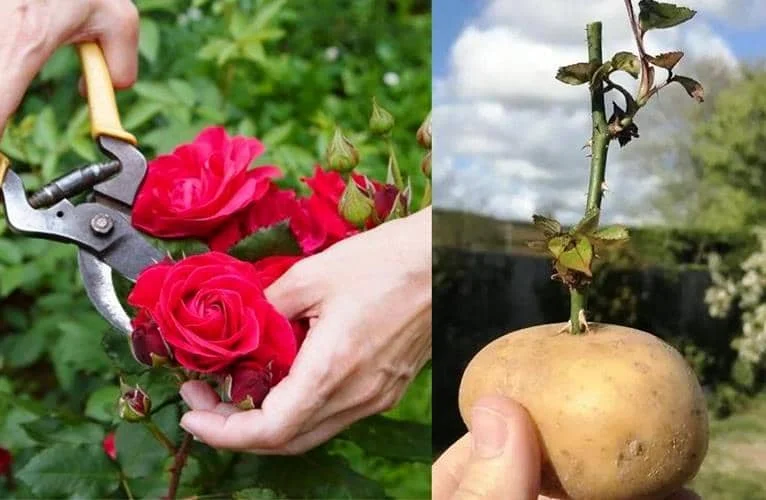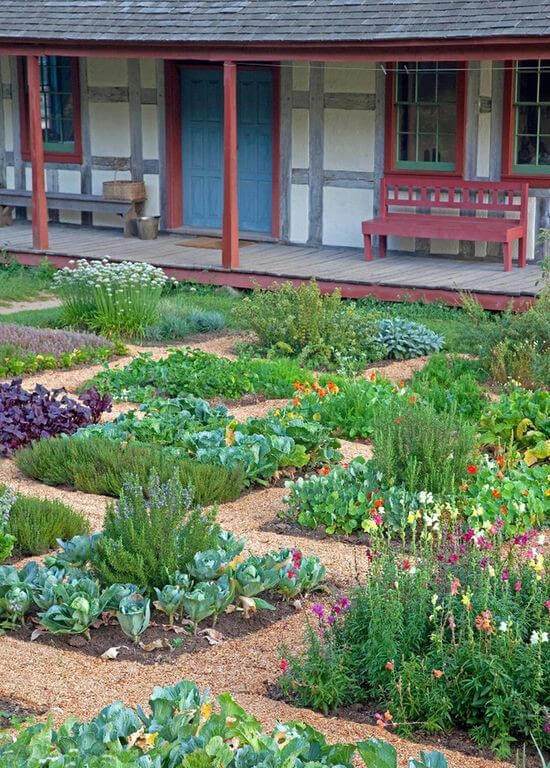
In the world of gardening, inventive methods for propagating plants often emerge, and one such technique that has gained traction across social networks is propagating roses on potatoes. This unconventional yet fascinating method involves using potatoes as a medium for rooting rose cuttings, offering a unique approach to expanding your rose garden. Here’s a detailed guide on how to propagate roses on potatoes:
Materials Needed:
- Healthy rose cuttings (6-8 inches long)
- Russet potatoes (preferably organic)
- Sharp knife or pruners
- Potting soil or compost
- Small pots or containers
- Watering can or spray bottle
- Plastic bags or clear plastic wrap
- Optional: Rooting hormone powder
Step-by-Step Guide:
- Prepare the Rose Cuttings: Select healthy, disease-free rose stems for propagation. Choose stems that are approximately 6-8 inches long and have several leaf nodes. Using sharp pruners or a knife, make a clean, angled cut just below a leaf node, ensuring each cutting has at least two to three leaf nodes.
- Prepare the Potatoes: Choose russet potatoes that are firm and free from any signs of rot or damage. Using a clean knife, create a hole in the potato that is slightly smaller than the diameter of the rose cutting. The hole should be deep enough to accommodate the lower portion of the cutting.
- Insert the Rose Cuttings: Carefully insert the bottom end of each rose cutting into the hole in the potato, ensuring that the cutting fits snugly. If desired, you can dip the cut end of the rose cutting into rooting hormone powder before inserting it into the potato.
- Prepare the Planting Containers: Fill small pots or containers with potting soil or compost, leaving about an inch of space below the rim. Moisten the soil lightly to provide a suitable environment for root growth.
- Plant the Rose Potatoes: Insert the potato with the rose cutting into the prepared potting soil or compost, ensuring that the cutting is fully inserted into the soil while the potato rests on the surface. Gently press the soil around the base of the potato to stabilize it.
- Provide Humidity: To create a humid environment conducive to root development, cover each pot with a clear plastic bag or plastic wrap. This helps retain moisture and prevents the cuttings from drying out during the rooting process.
- Place in a Warm, Bright Location: Position the pots in a warm, bright location with indirect sunlight. Avoid placing them in direct sunlight, as this can cause the cuttings to wilt. A temperature range of 70-75°F (21-24°C) is ideal for root development.
- Monitor and Water Regularly: Check the moisture level of the soil regularly and water as needed to keep it consistently moist but not waterlogged. Use a watering can or spray bottle to water the cuttings gently, ensuring that the soil remains evenly moist.
- Root Development: Over the next several weeks, monitor the cuttings for signs of root development. You may notice new growth emerging from the leaf nodes and an increase in overall vitality. Once roots have formed, the cuttings can be transplanted into larger pots or directly into the garden.
- Transplanting: After the rose cuttings have developed a healthy root system, they can be transplanted into larger pots or directly into the garden. Choose a sunny location with well-draining soil for optimal growth, and continue to provide regular care and maintenance as the plants establish themselves.
Benefits of Propagating Roses on Potatoes:
- Novelty: Offers a unique and creative approach to propagating roses that sparks curiosity and interest.
- Accessibility: Requires simple materials that are readily available and easy to obtain.
- Success Rate: Provides an effective method for rooting rose cuttings, with potatoes serving as a nutritious and moisture-retentive medium.
While propagating roses on potatoes may seem unconventional, it can be a fun and rewarding experiment for gardeners looking to expand their rose collection. By following these steps and providing proper care, you can successfully propagate roses using this curious yet effective method. Give it a try and watch as your rose garden flourishes with new additions!


